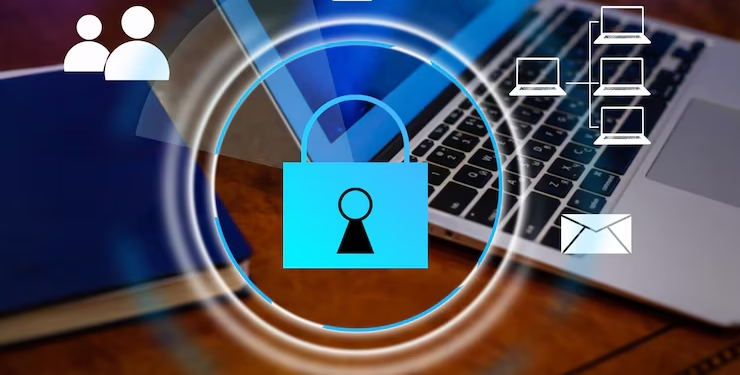In today’s digital landscape, data is the lifeblood of your organization. Every click, transaction, and interaction generates valuable information that drives decisions Organization’s Data and fuels growth. However, with great power comes significant responsibility. The protection of this sensitive data has never been more critical. One small breach can lead to devastating consequences—financial losses, reputational damage, or worse.
Understanding security protocols is essential for every business aiming to safeguard its assets and maintain customer trust. Whether you’re a startup or a well-established enterprise, knowing how to properly implement these protocols can mean the difference between thriving in a competitive market or becoming just another statistic in cybercrime reports. Let’s dive into what security protocols are all about and why they should be at the forefront of your organizational strategy.
Types of Security Protocols
Security protocols serve as the backbone of data protection strategies. Each type plays a unique role in safeguarding information.
Encryption protocols, like SSL/TLS, secure data during transmission. They scramble information so that only authorized users can decipher it. This is crucial for online transactions and communications.
Access control protocols are equally important. They manage who can view or manipulate sensitive data within an organization. Role-Based Access Control (RBAC) ensures individuals have access only to what they need for their tasks.
Authentication methods also fall under this category. Multi-factor authentication (MFA) adds layers of security by requiring multiple forms of verification before granting access.
Network security protocols protect against unauthorized intrusions through firewalls and intrusion detection systems (IDS). These measures create barriers that keep threats at bay while allowing safe communication within the organization’s infrastructure.
Importance of Data Security for Organizations
Data security is crucial for your organization’s integrity and trustworthiness. When sensitive information is compromised, it can lead to severe consequences, including financial losses and reputational damage.
Protecting customer data fosters loyalty. Clients want assurance that their personal information is safe. If they believe your organization takes security seriously, they’re more likely to engage with you.
Regulatory compliance also plays a role in the importance of data security. Many industries have strict standards governing how data should be managed. Failing to meet these standards can result in hefty fines and legal repercussions.
Moreover, cyber threats are ever-evolving. Organizations must stay vigilant against attacks such as phishing or ransomware that target confidential information.
Investing in robust security measures not only safeguards valuable assets but also creates a culture of responsibility within your organization, ensuring everyone understands the significance of protecting sensitive data.
Common Threats to Data Security
Data security faces numerous threats that can jeopardize your organization. One of the most common is phishing attacks. Cybercriminals often send deceptive emails to trick employees into revealing sensitive information.
Malware also poses a significant risk. This malicious software can infiltrate systems, leading to data theft or system damage. Ransomware is particularly alarming, as it encrypts files and demands payment for their release.
Insider threats shouldn’t be overlooked either. Employees with access can unintentionally or intentionally compromise data integrity. Whether through negligence or malice, these actions can severely affect your organization’s reputation and finances.
Outdated software remains an open door for hackers. Regular updates are crucial in patching vulnerabilities and keeping defenses strong against emerging threats in the digital landscape.
Best Practices for Implementing Security Protocols
Establishing security protocols is vital for safeguarding your organization. Start by conducting a thorough risk assessment to identify vulnerabilities. This foundational step lays the groundwork for effective measures.
Next, ensure that all employees receive regular training on data protection practices. Knowledge empowers staff to recognize potential threats and respond appropriately.
Implement multi-factor authentication wherever possible. This adds an extra layer of security, making unauthorized access more challenging.
Regularly update software and systems. Cyber threats evolve rapidly; staying current with updates helps shield your organization from emerging risks.
Encourage a culture of transparency regarding data handling practices. Open communication fosters accountability among team members, ensuring everyone understands their role in maintaining security.
Establish clear incident response plans. Being prepared can minimize damage when breaches occur, allowing your organization to react swiftly and effectively.
Case Studies: Successful Implementation of Security Protocols
One notable example of successful security protocol implementation comes from a multinational financial services firm. Faced with increasing cyber threats, they adopted a multi-layered approach. This included advanced encryption methods and routine employee training sessions on phishing attacks. Within six months, they reported a significant drop in data breaches.
Another case is that of a healthcare provider who prioritized patient data security by integrating robust access controls and regular audits. By employing these measures, they not only safeguarded sensitive information but also improved compliance with industry regulations.
A tech startup took proactive steps to secure its cloud Organization’s Data infrastructure by utilizing real-time monitoring tools alongside strict identity management protocols. Their efforts resulted in enhanced trust among clients and partners, demonstrating the effectiveness of rigorous security measures in fostering confidence.
Each organization’s journey offers valuable lessons on how tailored security strategies can effectively mitigate risks while promoting operational integrity.
Conclusion and Future Outlook
As we navigate the complexities of data security, it becomes evident that robust protocols are not just a luxury for your organization; they are a necessity. The landscape of threats is continually evolving, and staying ahead requires vigilance and adaptability.
With advancements in technology come new challenges. Organizations must remain proactive in updating their security measures to counteract emerging risks effectively. Continuous training for employees ensures that everyone understands their role in maintaining data integrity.
The future holds both uncertainty and opportunity. As organizations increasingly rely on digital platforms, investing in cutting-edge security solutions will be vital. Collaboration among industry leaders can lead to enhanced frameworks that protect sensitive information Organization’s Data while fostering innovation.
By prioritizing strong security protocols today, your organization can pave the way for secure growth tomorrow. Embracing these practices not only safeguards valuable data but also builds trust with clients and stakeholders alike—an essential component of any successful enterprise moving forward.







